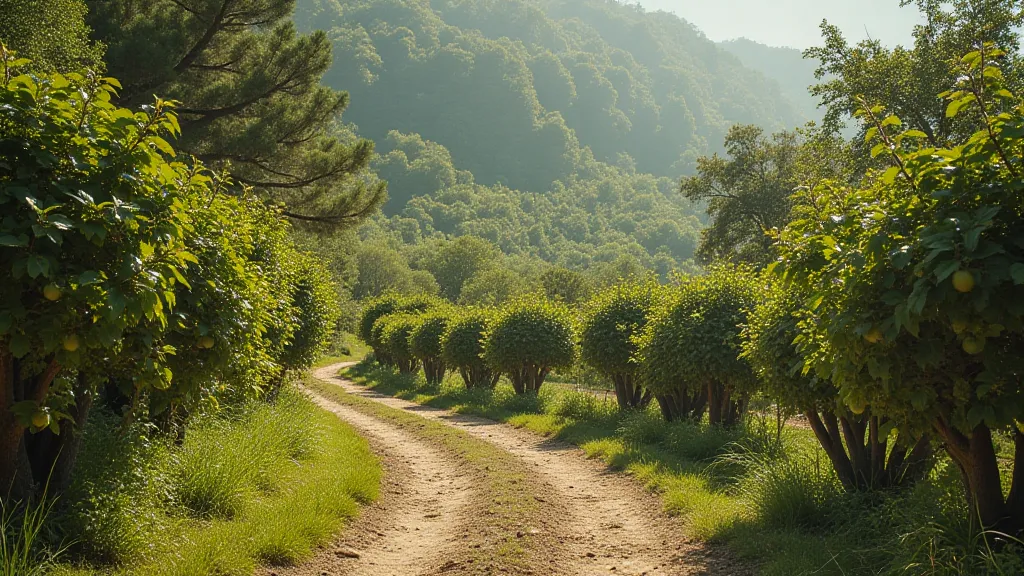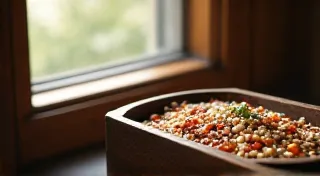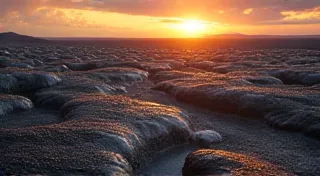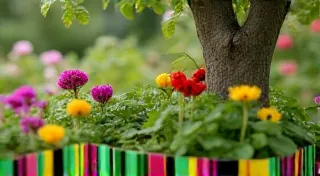The Poet's Graft: Blending Artistic Vision with Orchard Design
There's a certain melancholy beauty to an antique accordion. The bellows, once vibrant with music, now bear the patina of decades, perhaps even a century. The keys, yellowed with age, whisper of forgotten dances and long-ago celebrations. Holding one is like holding a fragment of history, a tangible echo of joy and sorrow. It resonates with a similar feeling I find when designing an orchard – a desire to cultivate beauty, to coax life and artistry from the earth, and to create a space that inspires contemplation.
Growing unusual fruits isn’t simply about acquiring rare varieties; it’s about crafting an entire experience. It’s about embracing the slow rhythm of the seasons, the unpredictable nature of life, and the profound satisfaction of nurturing something beautiful from seed to harvest. My own fascination with uncommon fruits began, unexpectedly, through my grandfather. He wasn’t a farmer, not in the traditional sense. He was a repairman, specializing in antique accordions. His workshop, a fragrant haven of wood, leather, and aged metal, was my childhood playground. He's the one who taught me to appreciate the intricate workings of something made with passion and precision.

The Architecture of Fruit: More Than Just Production
Most modern orchards prioritize efficiency – maximizing yield per acre. While there's merit in that approach, it often leads to monotonous rows of identical trees, lacking character and visual appeal. But what if an orchard could be more than just a source of fruit? What if it could be a work of art?
The concept of an "artistic orchard" isn’t entirely new. Historically, estates and grand houses often featured ornamental fruit plantings – carefully arranged trees and shrubs creating visually stunning landscapes. These weren't just about eating; they were about showcasing wealth, taste, and a cultivated appreciation for beauty. Sadly, much of that artistry has been lost in the drive for industrial-scale agriculture. Bringing back these traditions requires facing the challenges that often come with cultivating these unique varieties, as detailed in articles exploring the challenges and rewards of rare fruit cultivation. It’s a commitment, but one that yields immeasurable beauty and flavor.
When designing my own unusual fruit orchard, I approach it with a painter’s eye and a sculptor’s hand. I consider not just the individual fruit trees—the persimmons, pawpaws, medlars, and quince—but how they interact with each other and the surrounding landscape. The forms themselves are key. A sprawling quince tree, with its gnarled branches and vibrant blossoms, lends a different aesthetic than a tall, columnar pear. The play of light and shadow through the foliage becomes a living canvas.
Heirloom Varieties: A Tapestry of History and Flavor
The choice of fruit varieties is paramount. While modern cultivars often boast predictable yields and disease resistance, they often lack the character and complexity of flavor found in heirloom varieties. These older fruits are living links to the past, each with a story to tell. A single bite of a Cox’s Orange Pippin apple can transport you back to Victorian England, while a taste of a truly ripe pawpaw might evoke a sense of primal connection to the American wilderness.
The beauty of heirloom fruits extends beyond their taste. Their forms, colors, and textures often reflect a closer connection to nature, having evolved through generations of natural selection rather than artificial breeding. A purple medlar, with its unusual appearance and complex aroma, is far more intriguing than a generic red apple.
Finding these unusual varieties can be a treasure hunt in itself. Seed catalogs specializing in heritage fruits, online forums, and local nurseries with a passion for uncommon plants are excellent resources. Be prepared for longer waiting times and potentially higher prices compared to readily available cultivars. But the reward – a truly unique harvest – is well worth the effort. Successfully nurturing these varieties requires understanding the delicate balance of the ecosystem they thrive in, and proactively addressing any threats. Managing pests and diseases in an unusual orchard, as some might expect, doesn’t always involve conventional methods. A holistic approach is often best, as explored in detail in articles detailing approaches to pest and disease control.
Sculptural Forms and Spatial Harmony
Arranging the trees in the orchard isn’t a random process. I favor flowing lines and curved paths that guide the eye and create a sense of discovery. Instead of rigid rows, I use sweeping arcs and staggered plantings to soften the visual impact and create a more naturalistic feel. Grouping trees of different heights and textures adds depth and interest.

Consider also the view from different vantage points. A cluster of flowering cherry trees might be stunning when viewed from the patio, while a single, graceful pear tree might serve as a focal point from a distant window. The orchard should be a landscape that evolves with the seasons, offering new perspectives and surprises throughout the year.
The placement of non-fruit trees and shrubs is equally important. Flowering shrubs like lilacs and viburnums can provide spring blooms and attract pollinators. Evergreen trees can offer year-round structure and shelter. The goal is to create a layered and textured landscape that feels both wild and cultivated. Managing the financial sustainability of such a specialized operation also requires careful planning and a deep understanding of market dynamics, as demonstrated in articles dedicated to the orchard’s ledger and small-scale fruit production.
The Quiet Contemplation of a Craft
Just as my grandfather meticulously restored antique accordions, breathing new life into their aged beauty, cultivating an unusual fruit orchard requires patience, dedication, and a deep appreciation for the craft. It's a slow and deliberate process, demanding attention to detail and a willingness to learn from mistakes.
There's a quiet satisfaction in nurturing something from seed to harvest, in witnessing the transformative power of nature. It's a process that fosters a sense of connection to the earth, to the seasons, and to the generations of gardeners who have come before us. It's a chance to slow down, to observe, and to find beauty in the unexpected. The impact of climate change is also a growing concern for orchardists, and adapting cultivation practices to ensure resilience is paramount. Articles exploring these themes address the importance of the obsidian orchard and the cultivation of resilience in a changing climate.
The feel of a perfectly ripened persimmon in your hand, the sweet aroma of a medlar in bloom, the shared joy of a unique harvest with friends and family – these are the rewards of blending artistic vision with orchard design. It's a poet's graft, indeed—bringing beauty, artistry, and a little bit of magic into the everyday.

Beyond the aesthetic and the culinary delights, the creation and maintenance of an unusual fruit orchard embodies a philosophy. It's about embracing imperfection, valuing tradition, and cultivating a deep connection to the land. It's about recognizing that the most beautiful things are often the result of slow, deliberate effort, and a willingness to adapt to the whims of nature. It’s a commitment to preserving biodiversity, sharing unique flavors, and creating a space that inspires wonder and contemplation. The careful selection of heirloom varieties isn't merely about taste or appearance; it’s about safeguarding the genetic heritage of these remarkable plants, ensuring that future generations can enjoy their unique qualities. It's a testament to the enduring power of nature's artistry, and a reminder that even in a world obsessed with efficiency and uniformity, there is still room for beauty, magic, and a touch of the unexpected.
The process of establishing an orchard extends beyond simple planting. Soil health is paramount, requiring ongoing assessment and amendment to ensure optimal nutrient availability and drainage. Water management is another critical aspect, especially in regions facing water scarcity. Selecting appropriate irrigation methods and implementing water conservation techniques are essential for long-term sustainability. Furthermore, understanding the specific needs of each variety – their preferred soil pH, sun exposure, and chilling requirements – is crucial for success. This deep understanding of the interplay between plant, soil, and climate is what distinguishes a skilled orchardist from a mere gardener.
And finally, the sharing of the harvest. A truly exceptional orchard isn’t just about the beauty of the trees or the deliciousness of the fruit; it’s about the joy of sharing that bounty with others. Whether through farmers' markets, local restaurants, or simply offering samples to friends and neighbors, the act of sharing the harvest amplifies the sense of fulfillment and connection that comes from cultivating something truly special.





